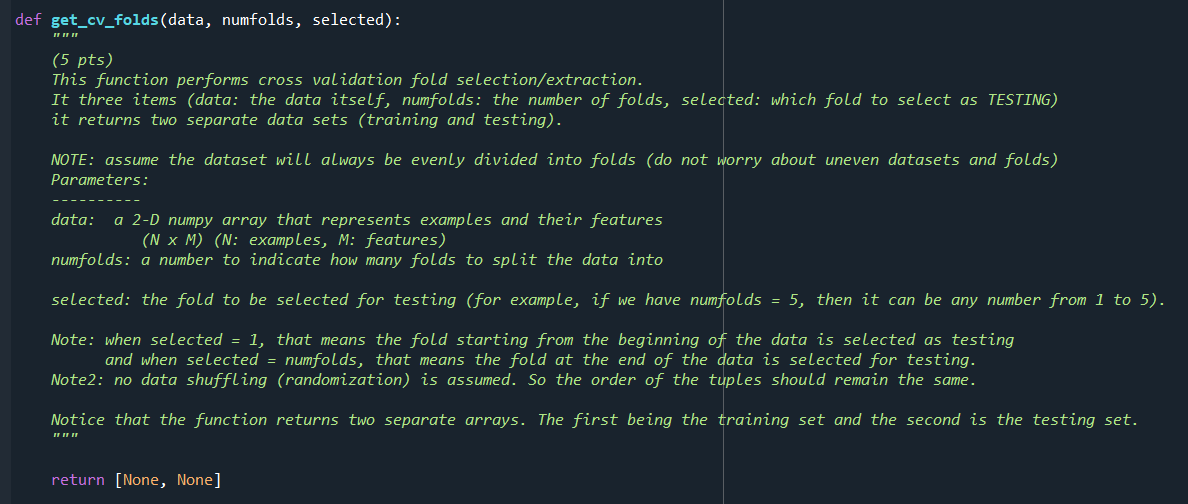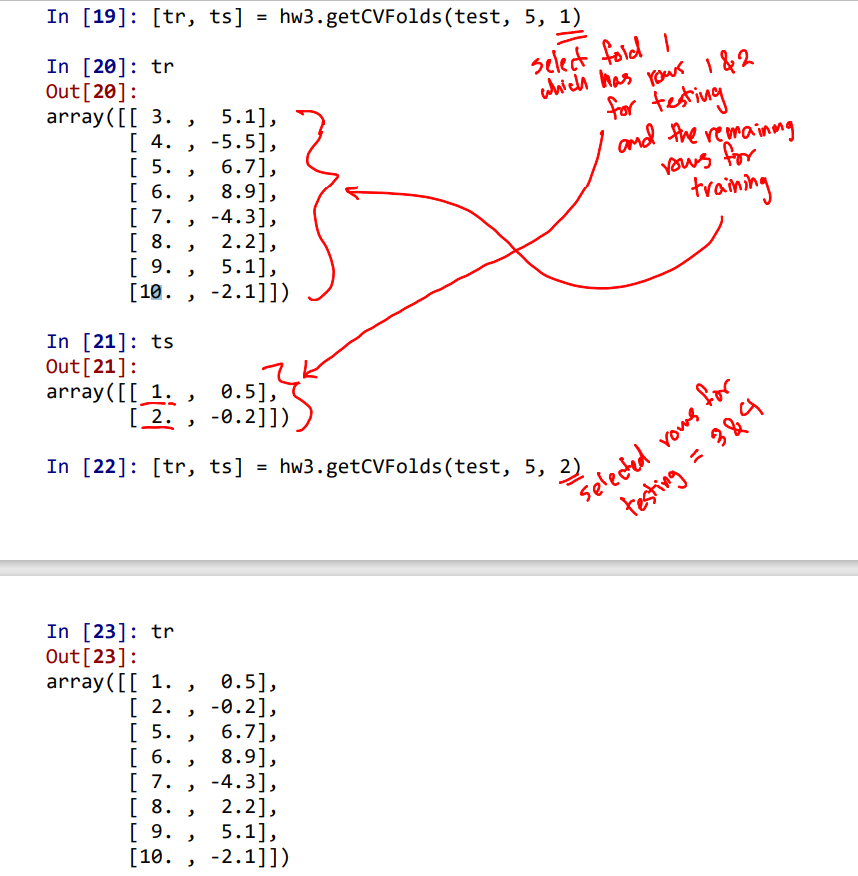Answered step by step
Verified Expert Solution
Question
1 Approved Answer
In python using Numpy only. And here is a sample output def get_cv_folds (data, numfolds, selected): (5 pts) This function performs cross validation fold selection/extraction.
In python using Numpy only.

And here is a sample output



Step by Step Solution
There are 3 Steps involved in it
Step: 1

Get Instant Access to Expert-Tailored Solutions
See step-by-step solutions with expert insights and AI powered tools for academic success
Step: 2

Step: 3

Ace Your Homework with AI
Get the answers you need in no time with our AI-driven, step-by-step assistance
Get Started


